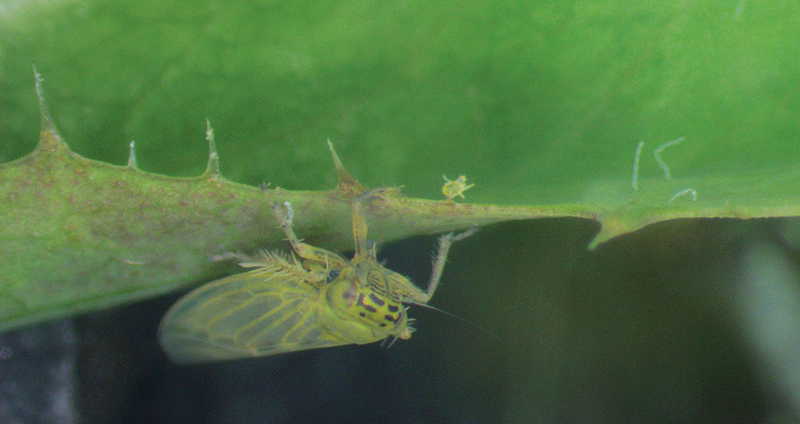Field studies show dandelion part of aster yellows disease cycle
Key result:
This project evaluated several crop and non-crop species commonly found in the Canadian Prairies as possible hosts for aster leafhopper development or phytoplasma infection or both. Alfalfa, sow thistle, stinkweed and dandelion were found to harbour aster yellows phytoplasma and are likely acting as reservoirs for the phytoplasma in Western Canada.
Project title, principal investigator:
“Investigating the role of plant hosts in the outbreaks of the aster leafhopper vectored aster yellows” Sean Prager, University of Saskatchewan
Funding:
SaskCanola
Full report:
To find the full report, go to the Canola Research Hub at canolaresearch.ca
and search for the project title.

Aster leafhoppers are the main vector of aster yellows phytoplasma in the Canadian Prairies. Aster yellows phytoplasma causes aster yellows disease in over 300 plant species, but is especially problematic in canola. Aster leafhoppers are migratory and almost every spring arrive on the Prairies. However, their arrival date typically precedes suitable staging of host crops. Researchers wanted to identify likely plants that sustain them prior to moving into crops.
Disease dynamics of aster yellows are also poorly understood. For example, the source of the phytoplasma-carrying leafhoppers each year is unknown. Aster yellows phytoplasma could originate from plants in the source areas of the leafhopper migration, which would be the case if the aster leafhoppers migrated with a high percentage of individuals infected. The alternative hypothesis is that the aster leafhoppers migrate into Saskatchewan and acquire the phytoplasma infection from local plants. A combination of these hypotheses is also possible.
Researchers evaluated several crop and non-crop species commonly found on the Canadian Prairies as food and reproductive hosts for aster leafhoppers through no-choice bioassays. To study possible effects of pathogen infection on host choice, uninfected and infected insects were used. Host choice selection behaviour accounting for both feeding and reproductive choices by aster leafhoppers was evaluated through two-choice bioassays, using domesticated and wild plants species commonly found in the Canadian Prairies.
The research team also captured and tested early-season migrant leafhoppers as they arrived in Saskatchewan to determine how many of them were infected with aster yellows phytoplasma when they migrated.
Results
- Surprising to the researchers, the migrant generation of aster leafhoppers had very low levels of infection, while several common plant species – alfalfa, sowthistle, stinkweed and dandelion – were harbouring aster yellows phytoplasma infections in the early spring and summer and are likely acting as reservoirs for the phytoplasma in Western Canada.
- When given a choice between a crop (including canola and three cereals) and a non-crop (weedy plants common in field margins), aster leafhoppers preferred crop plants over weedy plants and this preference likely drives their movement into crops from field margins.
- Aster yellows phytoplasma infection status of aster leafhoppers only influenced one of the studied preferences, indicating that infection with the phytoplasma likely does not have a strong effect on the behaviour or reproductive potential of the vector insect on the tested plants. The only preference shown was for uninfected leafhoppers to preferentially settle on non-crop hosts, which may indicate a preference for plants where aster yellows phytoplasma infection can be acquired.
- Canola and sowthistle were poor reproductive hosts for aster leafhoppers, yet sowthistle was one of the plants identified as an aster yellows phytoplasma reservoir. Cereal plants and fleabane were very suitable for aster leafhopper oviposition and nymphal development. This suggests that prior to crop emergence, a plant species such as fleabane could act as a suitable reproductive and food choice for aster leafhoppers. However, in the presence of an additional plant species, fleabane and other weedy species are less preferred (for settling, probing, and ovipositing), indicating that little reproduction is happening on the dicotyledonous weeds in the
field margins.





